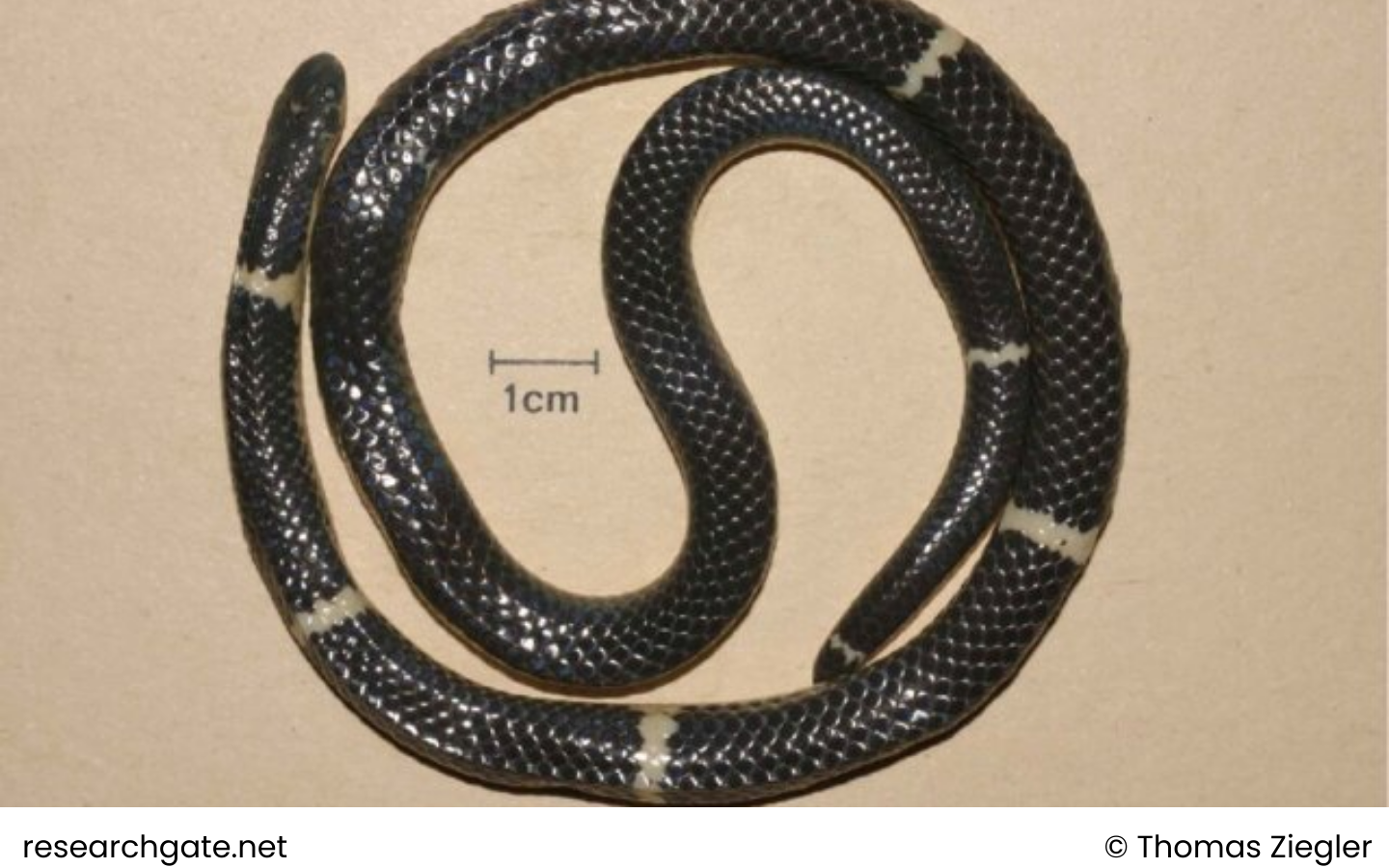
Science name: Calamaria thanhi – Ziegler & Quyet, 2005
Taxonomic: Animalia>> Chordata>> Reptilia>> Squamata >> Colubridae >> thanhi
Species status: Endemic ; IUCN status: LC (Least Concern)
Description:
Size: Large species with a total length of 455 mm.
Body: Dark, iridescent body with four yellowish to beige zigzag bands. Light dorsal markings on the base and tip of the tail, with a light venter.
Tail: Tapering gradually to a point, reduction to five dorsal scale rows on the tail.
Scalation: 198 ventral scales, 21 divided subcaudals, four supralabials (second and third entering the orbit), five infralabials. The rostral scale is wider than it is high, and the paraparietal is surrounded by six shields.
Distinct features: Absence of a preocular scale, three gular scales between the posterior chin shields and first ventral.
Diagnostic features:
Calamaria thanhi is characterized by its modified maxillary teeth, large size, and distinct scalation pattern. It lacks a preocular scale and has a tail with a gradual taper to a point.
Distribution and habitat:
Distribution and Habitat:
Elevation: Missing Info
Area: Endemic to Vietnam, specifically recorded from Quang Binh Province, Central Truong Son, Annamite mountain range.
Number of locations: 1
Type locality: Adjacent to Phong Nha – Ke Bang National Park, Dan Hoa Commune, Minh Hoa District, Quang Binh Province, Vietnam.
Habitat:
System: Terrestrial
Habitat type:
Subtropical/Tropical Moist Montane Forest
Range Description:
This species has only been recorded from a site adjacent to Phong Nha-Ke Bang National Park, Quang Binh province, Vietnam.
Behaviour and ecology:
Lifestyle: Diurnal species.
Activity: Primarily fossorial, living in forest leaf litter.
Movement patterns: Non-migratory
Congregatory behavior: Not observed
Generation length: Missing Info
Conservation and status:
Current conservation status: Missing Info
Threats: Habitat degradation and deforestation in the region may pose threats to its survival.
Protected areas: The species is recorded near Phong Nha-Ke Bang National Park, a protected area in Vietnam.
Continuing decline in habitat quality: Yes, due to habitat loss from deforestation and forest degradation.
Crocodile Trail – The Best Birding Trail in Cat Tien National Park
If you’re a birder or nature photographer planning a trip to Vietnam, few places offer [...]
Cong Troi Trail – Top 1 Dalat Plateau Birding Trail Experience
If you’re a birder or nature photographer planning a trip to Vietnam’s Central Highlands, the [...]
How to Identify the Greater Sand Plover, Tibetan Sand Plover and Siberian Sand Plover
Identification Differences within the Sand Plover Complex: The sand plover group, which was traditionally divided [...]
Highlights of Cat Tien National Park Reptiles and Amphibian Endemics
Spanning over 71,350 hectares of tropical forests, grasslands, and wetlands, Cat Tien National Park is [...]
Highlights of Cat Tien National Park Mammals in a World Biosphere Reserve
In addition to reptiles and birds, Cat Tien National Park is also rich in mammals, [...]
Kontum Plateau Endemic and Highlight bird
Kontum Plateau Endemic And Highlight Bird species like Chestnut-eared Laughingthrush and top birding routes while [...]